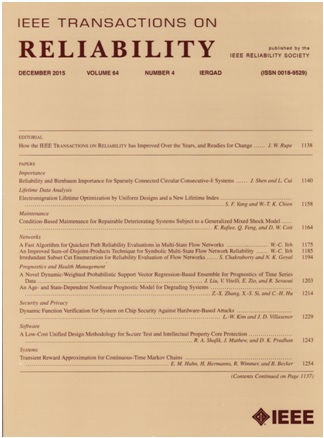An Interpretable and Reliable Remaining Useful Life Prediction Approach Across Different Machines With Tensor Domain-Adversarial Regression Adaptation
IF 5.7
2区 计算机科学
Q1 COMPUTER SCIENCE, HARDWARE & ARCHITECTURE
引用次数: 0
Abstract
This article tries to address the concerns about remaining useful life (RUL) prediction across machines: 1) what data from source domain contributes more to transfer prediction? and 2) is the information transfer reliable enough? This article proposes a novel fault mode-oriented deep tensor domain-adversarial regression adaptation approach to achieve interpretable RUL transfer prediction across machines. First, by integrating fault mechanism and degradation characteristics, a new fault mode-oriented significance indicator (FSI) is constructed based on tensor representation to evaluate the importance of degradation data from source domain. Second, a multisubdomains adversarial regression adaptation network, in which each subsource domain corresponds to a fault mode, is constructed to purposefully transfer the degradation knowledge from source domain. The domain discriminator for each subsource domain is adaptively weighted by FSIs that are updated in each round of adversarial training. An alternating optimization algorithm is then designed to find the optimal knowledge representation and transfer effect. Moreover, an upper bound of prediction error is derived for the proposed approach, which offers a theoretical guarantee for cross-machine prognostic task. Experimental results on three benchmark datasets empirically validate the proposed approach under fixed and varying working conditions, and can reveal fault modes' significance for more trustworthy prediction.基于张量域-对抗回归自适应的机器剩余使用寿命预测方法
本文试图解决有关机器间剩余使用寿命(RUL)预测的问题:1)源域的哪些数据对传输预测贡献更大?2)信息传递是否足够可靠?本文提出了一种新的面向故障模式的深度张量域对抗回归自适应方法,以实现可解释的机器间规则传递预测。首先,结合故障机制和退化特征,构建了基于张量表示的面向故障模式的显著性指标(FSI),用于评价源域退化数据的重要性;其次,构建多子域对抗回归自适应网络,每个子域对应一个故障模式,有目的地从源域传递退化知识;每个子域的域鉴别器由每轮对抗性训练中更新的fsi自适应加权。然后设计了一种交替优化算法来寻找最优的知识表示和传递效果。并给出了该方法预测误差的上界,为跨机预测任务提供了理论保证。在三个基准数据集上的实验结果在固定工况和变化工况下对本文方法进行了经验验证,揭示了故障模式对更可靠的预测的意义。
本文章由计算机程序翻译,如有差异,请以英文原文为准。
求助全文
约1分钟内获得全文
求助全文
来源期刊

IEEE Transactions on Reliability
工程技术-工程:电子与电气
CiteScore
12.20
自引率
8.50%
发文量
153
审稿时长
7.5 months
期刊介绍:
IEEE Transactions on Reliability is a refereed journal for the reliability and allied disciplines including, but not limited to, maintainability, physics of failure, life testing, prognostics, design and manufacture for reliability, reliability for systems of systems, network availability, mission success, warranty, safety, and various measures of effectiveness. Topics eligible for publication range from hardware to software, from materials to systems, from consumer and industrial devices to manufacturing plants, from individual items to networks, from techniques for making things better to ways of predicting and measuring behavior in the field. As an engineering subject that supports new and existing technologies, we constantly expand into new areas of the assurance sciences.
 求助内容:
求助内容: 应助结果提醒方式:
应助结果提醒方式:


